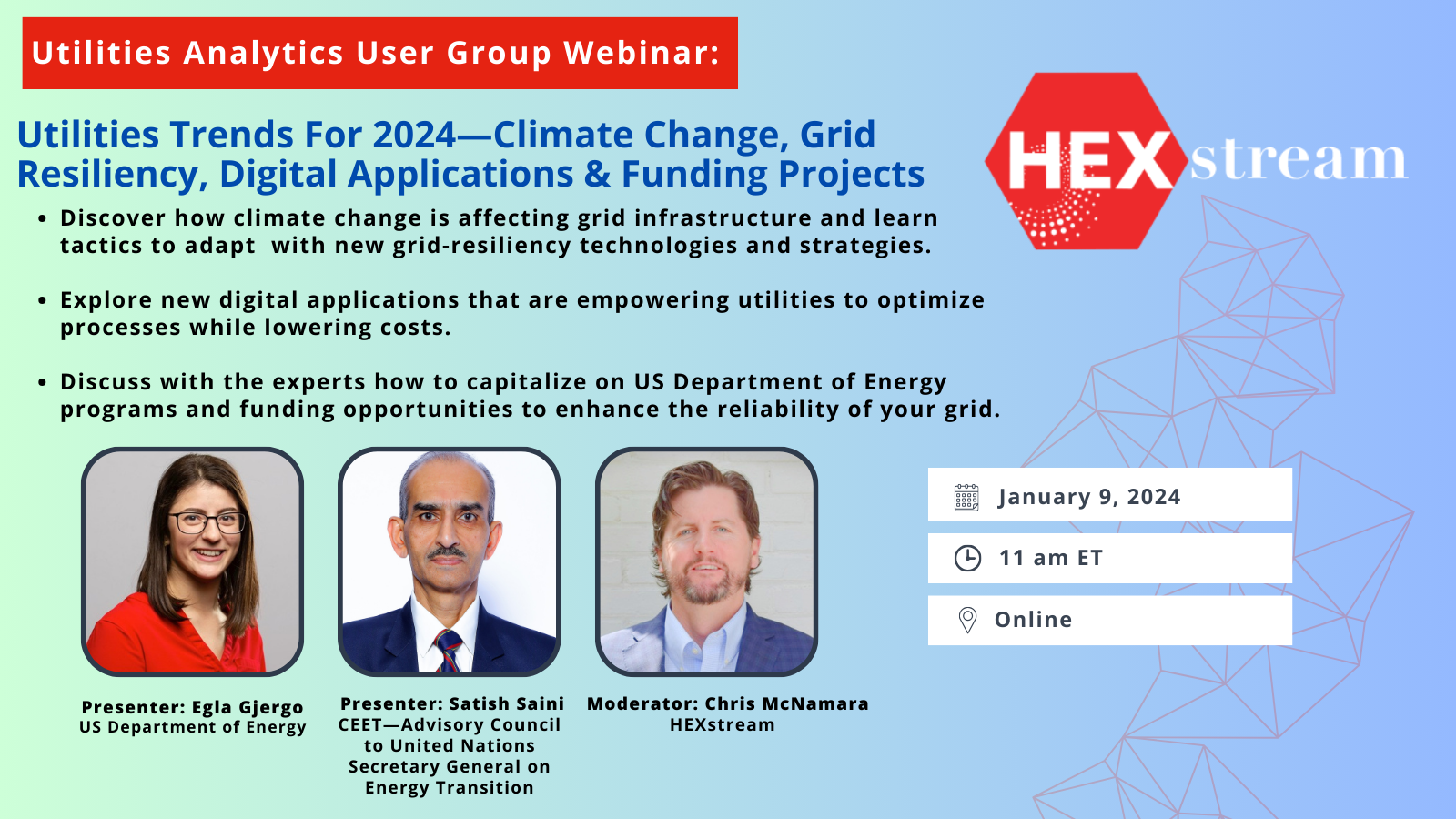My Takeaways From The United Nations COP 28 Event
By Satish Saini, HEXstream utilities industry specialist; member of the Advisory Council of Engineers on Energy Transition to United Nations Secretary General; Working Group Lead:
Energy Efficiency & Management, Transmission & Distribution, Utilities and Energy Consumers
Last week I attended the United Nations COP 28 event in Dubai, which gathered leaders from government, business, NGOs and civil society to find concrete solutions to the defining
climate issues of our time, especially to achieve decarbonization and 2050 net-zero targets.
“In our fractured and divided world, COP28 can show that multilateralism remains our best hope to tackle global challenges,” said António Guterres, secretary-general of the United Nations. “Specifically, I ask parties to ensure maximum ambition on two fronts. First, ambition on reducing greenhouse-gas emissions. Second, ambition on delivering climate justice.”
Here, find my key takeaways from the event, as well as my suggestions I put forward in the council:
- We are all committed to phasing out / phasing down our use of fossil fuels in energy and power systems. This can be achieved by the deployment of more renewable-energy sources in the power system.
- There is a lack of accessibility to power for the least-developed countries using renewable sources and relevant infrastructure. As such, there is a need for more inter-regional transmission-grid connections to allow the flow of power from available generation sources to other segments of needy communities; or the use of localized microgrids with renewables.
- While adding more renewable energy generation, we also need to understate the significance of energy efficiency in managing supply and demand while achieving decarbonization targets.
- We must focus on empowering consumers with the proper data, tools and techniques
for effective energy-efficiency contributions and to enable them to meet their own net-zero targets through various demand side management and load response programs. This will further help avoid large investments on the supply side, too. - In order to achieve decarbonization and net-zero targets on the supply side, we should focus on facilitating and integrating more renewable distributed energy resources (DERs) to the existing infrastructure through specific enablement and enhancement technologies, grid-optimization studies and programs.
- In relation to T&D grid infrastructure, we must strengthen and modernize transmission and distribution-grid infrastructure with latest digital technologies and solutions to facilitate more DER integration and adaptation due to severe weather events. There are multiple incidents where a lot of renewable generation had to be curtailed due to inadequate T&D infrastructure to carry that energy to end consumers.
- It is critical that we identify collaboration opportunities (and gaps) among policymakers, regulators, financing institutions, utilities, industry and engineering expertise.
- My concluding point is to focus on with a holistic and comprehensive approach for an efficient transition to achieve our targets i.e. by focusing on all segments of the power system including generation, transmission & distribution and consumer end; beside working on technologies, policies and financing for renewable and clean energy.
WANT MORE WITH SATISH? JOIN HIM FOR HIS UPCOMING WEBINAR. CLICK HERE TO REGISTER.

Let's get your data streamlined today!
Other Blogs
In the race to digital transformation, where should utilities start?
Almost every business leader in the utility space and beyond has heard the buzz about “digital transformation.” And for good reason! The right digital
Why Utilities Are Finally Flying to the Cloud
Despite unique industry challenges, utility organizations are increasingly adopting cloud-based infrastructure. In this blog, we focus on the specific
Unleashing the Benefits of Real-Time Maximo-OFS Integration in Utilities
Maximo and Oracle Field Service (OFS) Integration for Real-Time Data: How the Utilities May Benefit.
